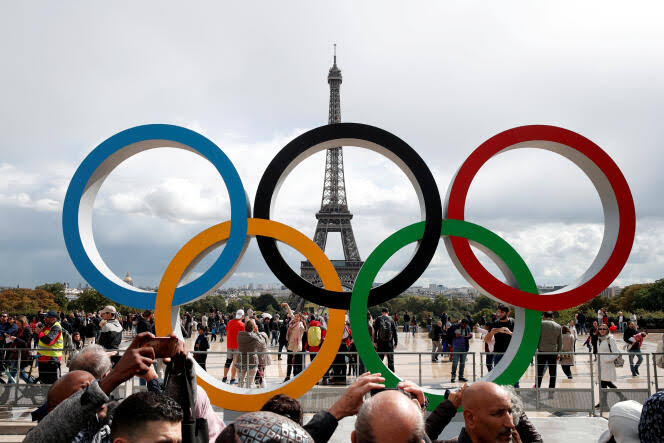Introduction
The Olympic Games, celebrated for their sporting excellence and global unity, are punctuated by one of the most iconic rituals: the medal ceremony. This tradition, which marks the culmination of athletic achievement, has evolved significantly over the years. It is a moment of pride, honor, and global recognition for athletes. This blog delves into the history of the Olympic medal ceremony, exploring its evolution, significance, and the cultural impact it has had over the years.
1. Origins of the Olympic Medal Ceremony
Ancient Olympics: The origins of the Olympic medal ceremony can be traced back to the ancient Olympic Games in Greece. Athletes were awarded olive wreaths (cotinus) rather than medals, symbolizing victory and honor. These wreaths were made from the branches of the olive tree, which was sacred to Zeus.
Early Modern Olympics: The modern Olympic Games, revived in 1896 by Pierre de Coubertin, introduced medals to recognize athletic achievement. The first medals awarded at the Athens Games in 1896 were simple and lacked the elaborate ceremonies seen today. The gold, silver, and bronze medals were presented in a straightforward manner, with minimal fanfare.
2. Evolution of the Medal Design
Early 20th Century: The design of Olympic medals has undergone significant changes since the early 20th century. The 1900 Paris Olympics saw the introduction of the first medals featuring the iconic Olympic rings. The design often included representations of the host city or country, with a focus on the aesthetic preferences of the time.
Mid-20th Century: By the mid-20th century, the design of medals became more standardized. The medals began to feature the Olympic emblem prominently and included the name of the event and the year. The use of gold, silver, and bronze became a symbol of first, second, and third place, respectively.
Contemporary Medals: Today’s Olympic medals are characterized by their intricate designs, often reflecting the host city’s culture and history. For example, the Tokyo 2020 medals featured designs inspired by Japanese culture and craftsmanship, incorporating recycled materials to emphasize sustainability.
3. The Medal Ceremony Tradition
Early Ceremonies: The first formal medal ceremonies were introduced in the 1904 St. Louis Olympics. The ceremony involved a more structured approach, with athletes standing on a podium to receive their medals. This was a significant departure from the informal presentations of earlier Games.
Modern Practices: Today’s medal ceremonies are elaborate events held in the Olympic stadium or designated venues. Athletes are awarded medals on a podium, with national anthems played and flags raised. The ceremony is a moment of global recognition and celebration, often broadcasted to millions of viewers worldwide.
4. The Role of National Anthems and Flags
Significance: The playing of national anthems and raising of flags during medal ceremonies is a symbolic gesture that celebrates national pride and achievement. It is a moment of collective pride for athletes and their countries, signifying the importance of representing one’s nation on the global stage.
Challenges: The selection of national anthems and the management of flag protocols can sometimes lead to controversies, especially if there are errors in the presentation or if the ceremony is disrupted.
5. Medal Ceremony Rituals and Etiquette
Athlete Conduct: Athletes are expected to adhere to specific protocols during medal ceremonies, including standing at attention while the anthem is played and refraining from any form of political expression. These guidelines ensure that the focus remains on athletic achievement and sportsmanship.
Ceremony Etiquette: The medal ceremony is a highly choreographed event, with specific procedures for the presentation of medals, the playing of anthems, and the display of flags. The rituals and etiquette are designed to create a respectful and celebratory atmosphere for all participants.
6. Cultural and Social Impact
Cultural Significance: The Olympic medal ceremony has become a global symbol of excellence, perseverance, and national pride. It is a moment that transcends sports, reflecting the broader cultural values of honor and achievement.
Social Impact: For many athletes, receiving an Olympic medal is the pinnacle of their careers. The ceremony often marks a moment of personal and professional fulfillment, influencing their future endeavors and public profiles.
7. Notable Medal Ceremonies
Historical Moments: Certain medal ceremonies have become iconic due to their historical significance or the dramatic circumstances surrounding them. For example, the 1968 Mexico City Olympics saw Tommie Smith and John Carlos’s Black Power salute on the podium, highlighting social and political issues of the time.
Memorable Performances: Memorable moments from medal ceremonies include Usain Bolt’s charismatic celebrations, Michael Phelps’s multiple gold medals, and the emotional reactions of athletes achieving their lifelong dreams.
8. The Future of Medal Ceremonies
Technological Advancements: The future of Olympic medal ceremonies may involve new technologies, including virtual reality and enhanced broadcasting techniques. These advancements could provide audiences with immersive experiences and new ways to engage with the ceremony.
Sustainability: Future medal ceremonies are likely to continue emphasizing sustainability, with efforts to reduce environmental impact and promote eco-friendly practices. The use of recycled materials for medals and green energy solutions for ceremonies are expected to play a significant role.
Conclusion
The Olympic medal ceremony is a powerful tradition that celebrates athletic excellence, national pride, and global unity. From its origins in ancient Greece to its modern-day grandeur, the ceremony has evolved to reflect changing cultural and technological landscapes. It remains one of the most cherished moments of the Olympic Games, embodying the spirit of competition, achievement, and international camaraderie. As the Olympics continue to evolve, the medal ceremony will undoubtedly remain a central and symbolic part of this grand celebration of human athleticism and spirit.

